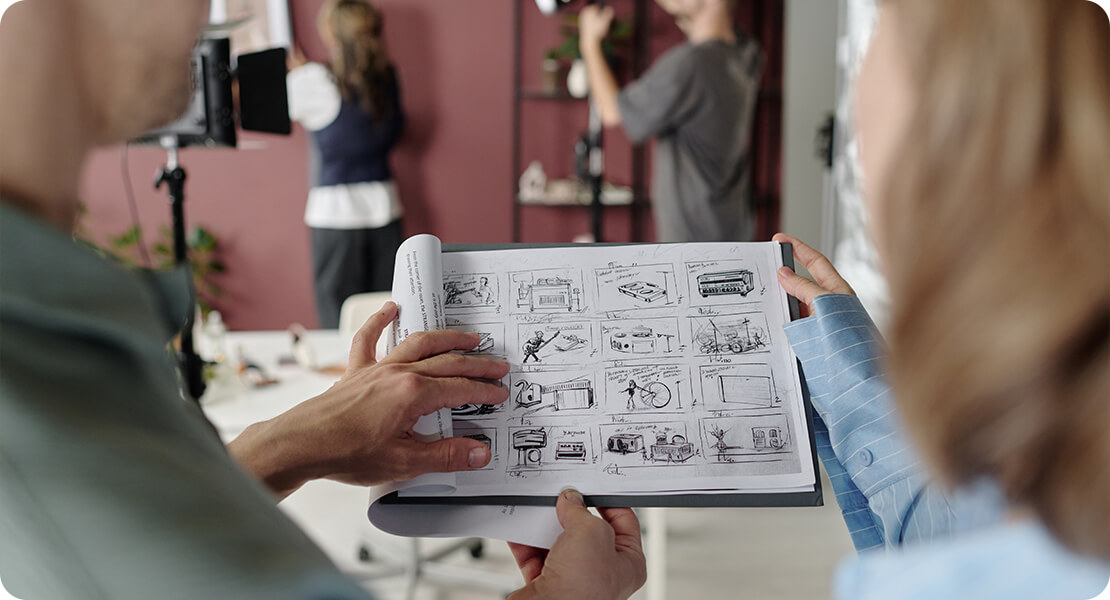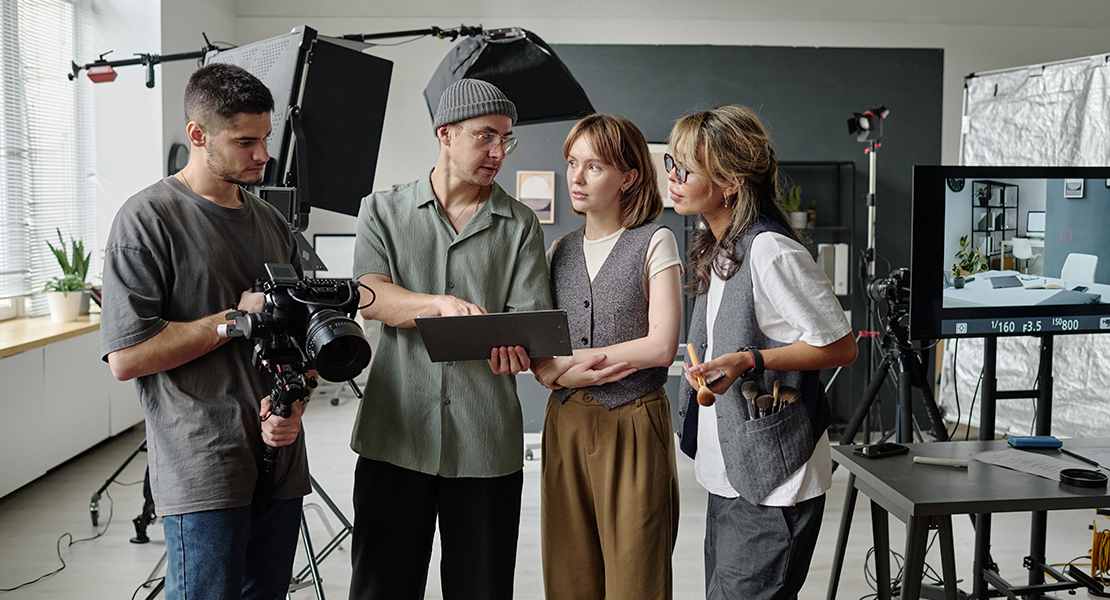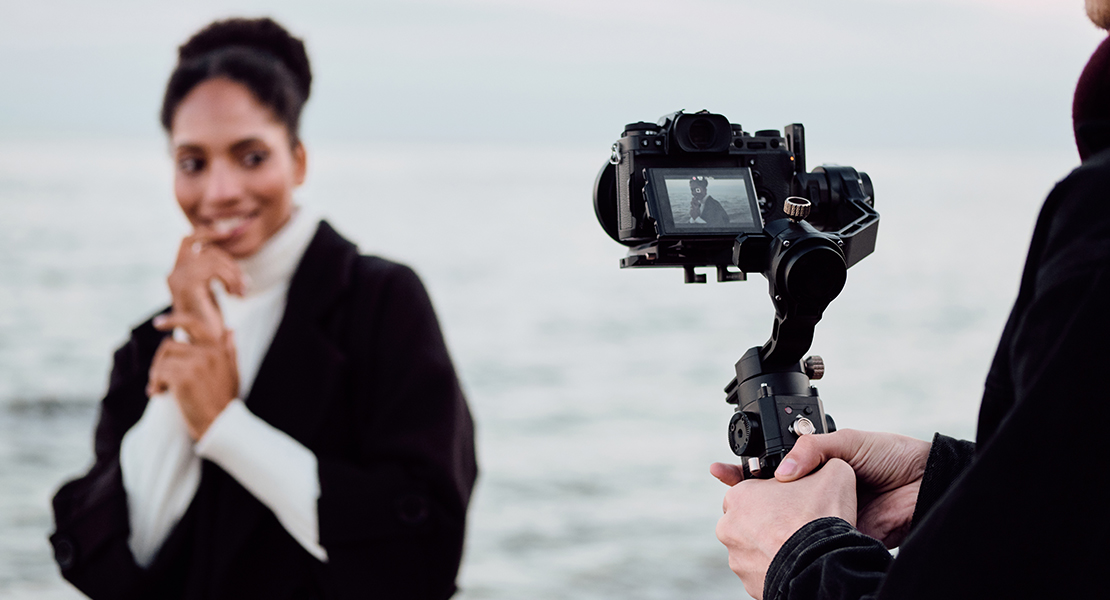
If you’re looking to produce a case study video that doesn’t just sit on your website collecting dust, but actually builds trust, credibility, and conversions—then you’re in the right place. Case study videos can be one of the most powerful tools in your marketing toolkit, but only if they’re done right. So let’s walk through fifteen practical, real-world tips that’ll help you create a video that connects with viewers and delivers real results.
1. Start with a Clear Objective
Before you begin filming anything, take a step back and ask yourself: why are you making this video in the first place? A case study video without a clear objective can end up directionless, wasting time and budget. Are you aiming to showcase your product’s performance, highlight a particular client success, or support your sales team in closing deals? Clarity here is absolutely key.
Once you’ve settled on your main objective, make sure it’s specific and measurable. Instead of just wanting to “increase awareness”, set a goal like “generate 50 new demo requests in the first month”. With a defined target, you’ll be able to tailor your messaging and storytelling choices accordingly, which makes everything more focused.
The objective also influences who you choose to feature, what questions you ask, and how the final video is structured. For example, if your goal is to emphasise fast onboarding, you’ll need to focus on the client’s early experience. If it’s long-term results, shift the attention to the outcomes months down the line.
Finally, share your objective with everyone involved—internal teams, the client, the production crew—so everyone is on the same page. It’s much easier to hit a target when everyone can see it. Plus, clear communication from the beginning helps keep your video project aligned and stress-free.

2. Choose the Right Customer to Feature
Not every satisfied client is going to be the right fit for a case study video. The ideal customer is one who not only has a compelling story to tell but is also representative of your target audience. Think about what kind of buyer you want this video to appeal to, and find a client whose story matches that journey.
It’s also important to consider the relationship you have with the client. Someone who has had an overwhelmingly positive experience will naturally speak with more energy and conviction. Clients who feel genuinely grateful or excited about what you’ve done for them are usually the ones who give the most heartfelt, memorable testimonials.
Public recognition can also play a role. Featuring a well-known brand or influential client in your case study adds credibility and may even increase the likelihood of it being shared. But don’t discount smaller clients—sometimes their stories are more relatable and emotionally engaging, which can actually resonate more with viewers.
Make sure to get their enthusiastic consent early in the process. Be transparent about the filming schedule, the purpose of the video, and where it will be published. A client who feels informed and comfortable will be more relaxed on camera and more willing to collaborate at every stage.
3. Build a Narrative Arc
Think of your case study as a short story or documentary—it needs a structure that draws the viewer in and guides them through the journey. A narrative arc typically includes a challenge, a solution, and a transformation. Starting with the problem hooks your audience emotionally because they likely face similar issues.
Once the problem has been established, the middle part of your video should explore how your product or service entered the picture. This is the “aha” moment—the turning point where the viewer begins to understand the value you bring. Be sure to include specifics like the process, timeline, and support involved.
Then comes the payoff: the transformation. This is where the viewer sees tangible results and improvements. Whether it’s increased revenue, reduced waste, or better employee morale, make this part as detailed and visual as possible. Data helps, but so do human moments—look for real quotes and emotional reactions.
Throughout, remember that storytelling is about more than just facts. A good narrative has tension, resolution, and ideally, a sense of satisfaction. If your viewer can follow that arc and see themselves in the client’s shoes, they’re far more likely to take action afterwards.
4. Script the Flow, Not the Dialogue
Scripting the flow of your case study video means knowing what beats you want to hit—what topics, in what order, and with what transitions. This gives structure to your shoot and your edit, without turning the final product into a robotic script read. You’re aiming for guided authenticity, not scripted sales talk.
Instead of writing out word-for-word responses for your interviewee, prepare open-ended questions that prompt natural, passionate answers. Questions like “What was the biggest challenge before you found us?” or “How has your day-to-day changed since using our service?” encourage reflection and storytelling.
A well-structured flow also makes editing much smoother. When you already have an outline in place, you know exactly what content you’re looking for in post-production. You’ll spend less time digging through footage and more time polishing a compelling, watchable story.
Letting the client speak in their own voice keeps things genuine. Audiences are quick to spot overly polished or forced testimonials, and it can make them doubt the story. If your goal is to build trust, letting the human side shine through is far more effective than scripting every word.

5. Prep Your Interviewee Thoroughly
The more comfortable your interviewee feels, the better their performance will be. Many clients won’t have media training or experience being on camera, so it’s your job to make them feel prepared. Start by giving them a full briefing—what kind of questions they’ll be asked, how long the session will take, and where the video will be used.
You should also explain the purpose of the case study and how their input will help others in similar situations. When they understand the wider context, they’ll be more likely to speak passionately and from the heart. Encourage them to think through their answers ahead of time—not to rehearse, but to feel confident.
Holding a quick pre-interview chat or discovery call is also a great idea. It allows you to identify key parts of their story, flag any potential challenges, and build rapport. This kind of preparation goes a long way in helping the actual shoot feel more like a conversation and less like an interrogation.
Finally, during the shoot, be patient and encouraging. Reassure them that mistakes are fine and that everything can be edited. The goal is to make them forget about the camera and focus on telling their story—comfort and confidence lead to the most engaging footage.

6. Use Professional-Quality Video and Sound
The quality of your video can make or break your message. Even the most compelling story can lose its impact if the video is shaky, the lighting is harsh, or the audio is muffled. High production value communicates professionalism and trustworthiness—essential qualities if you’re trying to persuade potential clients.
Investing in good equipment or hiring a professional crew can dramatically elevate your final product. Use proper lighting setups to ensure the subject is well-lit without harsh shadows. Make sure the background is tidy and visually appealing, but not distracting. Subtle details like these contribute to a polished overall aesthetic.
Sound is just as important—arguably more so. Viewers will tolerate imperfect visuals far more than they will tolerate poor audio. Always use an external microphone, such as a lapel mic or boom mic, and monitor the levels during the shoot. Capturing crisp, clean sound will help your client’s message come through loud and clear.
If you’re shooting remotely, guide your client through setup. Recommend a quiet location, help them position their webcam, and offer lighting suggestions. Even with basic equipment, proper guidance can lead to surprisingly good results—and it shows your dedication to doing the story justice.
7. Film More Than You Think You’ll Need
One of the most common regrets in post-production is not having enough footage. You never know which line, reaction, or casual comment will end up being the perfect quote. By filming generously, you give yourself more options and flexibility in the edit, which often makes the difference between a good and great video.
Allow the camera to keep rolling between official takes. Sometimes the best soundbites happen when people think the formal questions are over. These candid moments can add warmth and personality, making the video feel more relatable and human. Silence, laughter, or spontaneous remarks are often storytelling gold.
Getting extra footage also allows you to cover any technical issues. Maybe someone stumbles over their words, or the lighting shifts unexpectedly. Having multiple takes or different angles ensures you won’t be stuck trying to patch over a problem with limited options.
Just make sure your interviewee knows you’ll be recording generously and that everything will be edited carefully. Reassure them that only the best, most flattering content will make it into the final cut. With that trust in place, you’ll have more freedom to capture the moments that matter most.
8. Incorporate Supporting Visuals (B-Roll)
Talking heads alone can quickly become monotonous. To keep viewers engaged and bring the story to life, you’ll need to include B-roll footage—secondary visuals that help illustrate what’s being said. This might be shots of the customer using your product, scenes from their office, or cutaways of documents, meetings, or team interactions.
Planning your B-roll ahead of time is crucial. Think about the key moments in the story and how you might represent them visually. If the client talks about improving team collaboration, maybe you capture shots of brainstorming sessions or software in use. These visual reinforcements help break up the dialogue and make the message more immersive.
When B-roll aligns with the dialogue, it creates a seamless flow. Instead of just hearing about a success, the viewer sees it unfold. That multi-sensory experience is far more memorable than voice alone. It’s especially powerful for audiences who prefer visuals over words—a common trait in today’s attention economy.
Don’t forget branded visuals too. Subtle inclusion of logos, user interfaces, or branded materials can reinforce recognition without feeling too salesy. Keep it classy and relevant, and your B-roll will become a dynamic part of your storytelling toolkit.

9. Keep It Focused and Concise
In the age of short attention spans, less is often more. A great case study video should be just long enough to tell the story powerfully, but not so long that it loses the viewer’s interest. A runtime between two and four minutes usually works best—enough to establish the problem, solution, and results, but short enough to remain digestible.
One of the biggest editing challenges is knowing what to cut. The temptation to include every great quote or interesting detail is strong, especially after spending so much time on filming. But your audience doesn’t need everything—they just need the essentials, delivered clearly and confidently.
Editing ruthlessly doesn’t mean discarding nuance; it means prioritising clarity and flow. Aim for punchy soundbites, tight transitions, and visuals that support rather than clutter the message. Every second should serve a purpose. Ask yourself: is this moving the story forward or just adding noise?
You can always offer extended cuts, transcripts, or deeper content elsewhere on your site. But for the main video, focus on impact. A focused video respects your audience’s time and dramatically increases the chances that they’ll watch it all the way through—and take action afterward.
10. Make Data and Results Visually Stand Out
Facts and figures are the backbone of any convincing case study, but they can easily get lost in the narrative if not presented well. Rather than just mentioning them verbally, highlight key statistics visually. Use on-screen graphics, motion text, or infographics to reinforce the client’s success in a way that sticks.
For example, if your client saw a 70% boost in efficiency, show that figure as a bold, animated overlay when it’s mentioned. This not only captures attention but also ensures that the viewer takes that figure away with them. Visual cues help anchor important data in the viewer’s memory and make the video more professional.
Be careful not to overload the viewer with too many metrics at once. Stick to two or three standout results and give each one room to shine. Overcomplicating your visuals with charts or excessive detail can be distracting and reduce impact. Clarity and consistency are more effective than overwhelming detail.
Finally, make sure your visual style aligns with your brand. Use your colours, fonts, and tone to keep the video cohesive. This subtle branding keeps your company top of mind and elevates the professionalism of the video as a whole. When results look good and are presented well, they hit harder.

11. Include a Strong Call to Action (CTA)
You’ve told a great story—now what? Don’t let the viewer reach the end of your video and wonder what to do next. Every case study video should have a clear, compelling call to action that guides the viewer toward a meaningful next step. Whether it’s booking a demo, starting a trial, or downloading more information, the CTA is where the story leads to action.
Place your CTA at the very end, but reinforce it throughout the video subtly if you can. Mention how easy it was for the client to get started or how smooth the onboarding process was. These mini-prompts prepare the viewer for the final nudge, making them more likely to respond when you finally say, “Want similar results? Let’s talk.”
Make sure your CTA is specific. Avoid vague phrases like “learn more” and instead use actionable prompts such as “Schedule your free consultation today” or “See how we can help your team too”. The more clearly you frame the next step, the easier it is for the viewer to follow through.
Consider adding a clickable link or button alongside the video, especially on web pages or email campaigns. Give people multiple ways to act, and reduce the number of clicks it takes to do so. That final moment of momentum is golden—don’t waste it.
12. Optimise for Multiple Platforms
Once your video is complete, you’ll want to get it in front of as many eyes as possible. That means preparing it for different platforms—each with its own best practices. What works on YouTube won’t necessarily perform well on LinkedIn or in a sales email. Tailoring your video for each context is key to maximising its reach.
Start by creating a few different cuts. Your full-length version is perfect for your website or landing page. But for social media, consider shorter, teaser-style edits with strong opening lines and subtitles. These should hook viewers in the first few seconds and encourage them to click through to the full video.
Email is another valuable use case. A case study video embedded in a follow-up message can warm up leads or help close deals. Keep this version concise and CTA-focused. For presentations or webinars, a slightly longer version might be appropriate—one that goes into more detail and supports live discussion.
Finally, ensure your videos are mobile-friendly. Many people watch on small screens and without sound, so use readable captions and avoid cluttered visuals. Think about file sizes too—some platforms compress heavily, so optimise your resolution and aspect ratio accordingly.
13. Use Subtitles and Captions
In today’s mobile-first world, many viewers watch videos without sound. Whether they’re scrolling through LinkedIn at work or watching on the train, sound-off viewing is more common than you might think. Subtitles and captions ensure your story is accessible, digestible, and effective even when muted.
Adding captions also improves accessibility for people who are deaf or hard of hearing. This is not just a nice-to-have feature—it’s becoming an expectation. Making your content inclusive expands your reach and demonstrates your brand’s attention to detail and respect for all viewers.
You can create captions manually or use auto-captioning tools, but always review and edit them for accuracy. Spelling errors, mistimed phrases, or awkward line breaks can make even a well-produced video feel sloppy. Subtitles should complement the message, not distract from it.
You can also use stylised captions to highlight important quotes or key takeaways. This adds visual interest and reinforces your message. Just be careful not to overdo it—clean, simple text with good contrast and legibility will always be more effective than overly animated or decorative fonts.
14. Capture Authentic Emotion
What separates a good case study from a great one is emotional authenticity. The viewer needs to believe that your client truly felt relief, joy, or pride because of your product or service. Those emotions are what drive connection and trust—far more than polished statistics or clever lines.
To capture real emotion, encourage your interviewee to speak from the heart. Ask questions that dig deeper, like “How did that result make you feel?” or “What impact did this have on your team’s morale?” Don’t rush them—let the silence sit for a moment if needed. That’s often when the most powerful answers come out.
Facial expressions, voice tone, and body language tell just as much of the story as words do. Be sure to shoot close-ups when appropriate, and don’t cut away too quickly in the edit. Let the viewer feel what your client felt, and you’ll make a far more lasting impression.
These authentic moments also differentiate your brand. Many companies can claim results, but not all can show genuine client satisfaction. If someone watching sees a reflection of their own hopes or frustrations in your case study, they’re far more likely to engage with you.

15. Track Performance and Refine
Publishing your case study video is just the beginning. To truly maximise its value, you need to track how it performs. Use analytics to monitor viewer behaviour—how long are they watching, where do they drop off, what platform performs best? These insights help you understand what’s working and what needs adjustment.
Data helps you get smarter with each new video. For instance, if your drop-off rates are high in the first 30 seconds, you might need a stronger opening or a more engaging thumbnail. If people are rewatching a specific part, that’s a clue that the messaging there is particularly effective.
Gather feedback from your sales and marketing teams too. How are they using the video? What responses are they getting from leads or clients? Qualitative feedback can be just as useful as hard metrics when it comes to refining your strategy.
Finally, don’t be afraid to iterate. Cut new versions for different audiences, update the content as new results come in, and create follow-up videos to keep the story going. The more intentional you are about learning and improving, the more valuable your case studies will become over time.
Final Thoughts
Producing a powerful case study video isn’t just about turning on a camera and asking a few questions. It’s about crafting a story that resonates, supports your business goals, and inspires action. From choosing the right customer to tracking viewer behaviour after launch, each step plays a role in how effective your final video will be.
The best part? Case study videos are versatile assets that can serve you across marketing, sales, and client success. They’re proof of your product’s value, told through the voice of someone who’s been there. Done well, they build trust faster than any brochure or blog ever could.
So whether you’re just starting out or levelling up your video strategy, keep these 15 tips in your back pocket. Follow them, and you’ll create case studies that don’t just inform—but actually convert.
If you would like help creating great case study videos that are a cut above the rest, then get in touch with us at Spiel for a free consult. We’ll help you craft a story that captivates your audience and turns viewers into customers.

